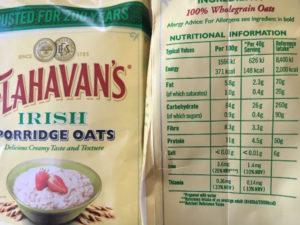Cheryl Cormany was diagnosed with diabetes at six-years-old. Even though she was diagnosed at a young age, she has thrived with diabetes through many stages of life. From childhood, to adolescence, through college and now as the mom of three boys she loves to share her diabetes journey with others.
In 2005 Cormany found her way to a career helping others with diabetes when she joined Medtronic as an inside sales representative. Her career has taken her through many facets of the company. She now serves as a clinical program specialist, working on educational programs for healthcare providers. She is happy to share some her diabetes experiences with the readers of the LOOP Blog. This article originally appeared with the title, Carb vs. Sugar: How to Understand Nutrition Labels.
Myth: Carbohydrate grams don’t matter. Sugar grams are the only thing that increases blood sugar.
Fact: Both sugar grams and carbohydrate grams have a direct impact on blood sugar.
How your body works
The foods we eat break down when digested and much of what we eat breaks down into glucose. (Exceptions to this rule are proteins like meat, poultry and fish, and non-starchy vegetables). Insulin is needed when we eat anything that breaks down into glucose – the insulin either comes from your pancreas, or you need to take insulin from a pump/shot.
 Where this gets tricky is that it’s easy to think that glucose is sugar only, which is not the case. What makes it even more confusing is that they are both on the nutrition label and we know that is where we are supposed to look for our carbohydrate information.
Where this gets tricky is that it’s easy to think that glucose is sugar only, which is not the case. What makes it even more confusing is that they are both on the nutrition label and we know that is where we are supposed to look for our carbohydrate information.
Nutrition Labels
Carbohydrates are actually comprised of three nutrients: carbohydrates, fibre, and sugar. You may, and will, see foods that are very low in sugar but high in carbohydrate.
Looking at a popular unflavoured, old-fashioned oats label (above) you can see that the total sugar is 1 gram. Looks great right? This item is practically sugar free you might think, but that’s not entirely true, because sugar grams are not what we would base our insulin/medication needs off of. Instead we need to look at the carbohydrate serving, and for this type of oatmeal it is 27 grams of carbs. That is far different from 1 gram and would need a dose of insulin to go with it.
Then look at the nutrition label for a ‘porridge oat bar’ where there are now sugars present which need to be addressed with an insulin dose.
Read the original article here: www.medtronicdiabetes.com/loop-blog
News items and features like this appear in the Desang Diabetes Magazine, our free-to-receive digital journal. We cover diabetes news, diabetes management equipment (diabetes ‘kit’ such as insulin pumps and continuous glucose monitoring equipment) and news about food suitable for a diabetic diet including a regular Making Carbs Count column. Go to the top of this page to sign up – we just need your email address. www.desang-magazine.co.uk




